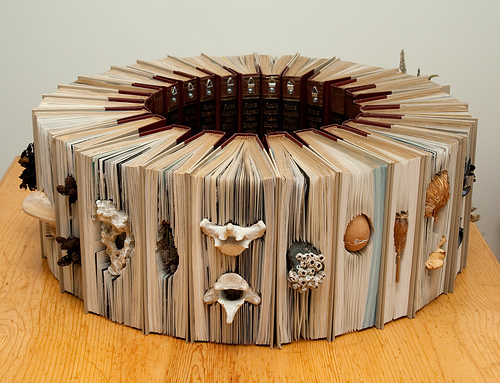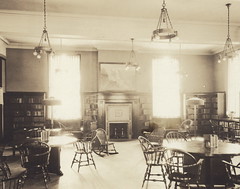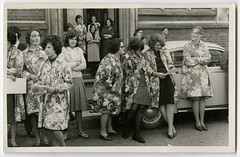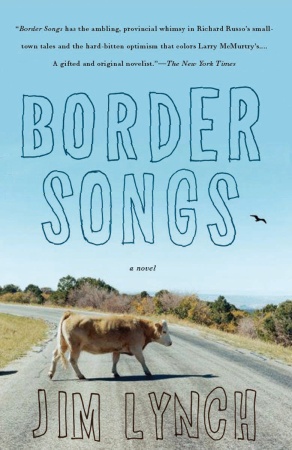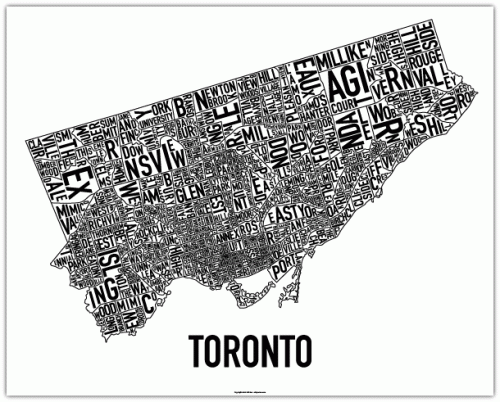
Thank you Dan and Ingrid for introducing me to Ork Posters. Love it.
Page 39 of 123
One of the great things about having creative friends is pimping their stuff.
Rachael Ashe is a photographer, mixed-media collage, and altered book artist. She does amazing things to old books and this summer her work is displayed at the Pacific National Exhibition (the PNE) in Vancouver in the Container Art show.
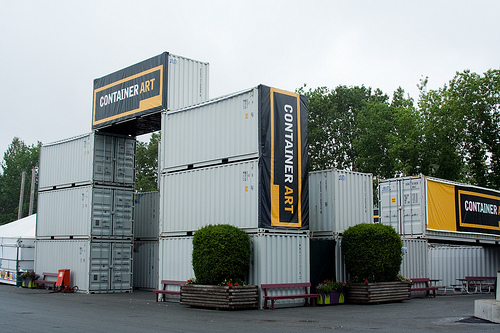
Container Art is an ambling exhibition. The containers travel the world and are then filled with beauty at every stop.
So don’t just ride the rollercoaster, check out cutting edge contemporary art from Vancouverites.
Rachael Ashe’s container includes amazing book art that floats along the side and back walls. I particularly love the accompanying paper flowers that hang from the ceiling.
Her series is called Forgotten Knowledge and uses a set of twenty-five Funk & Wagnall’s encyclopedias combined with found objects from nature.
Visit Rachael Ashe’s Container Art from August 21st to September 6th at the PNE
Can’t get to the PNE, that’s ok. Just purchase her stuff on Etsy. Ya! Do it, Rachael’s art is cool. I own two altered books already.
Ordinary Thunderstorms is a well written book with a horrible, morally short premise. I did not like this book, but I’d still recommend it. How’s that for conflict?
Adam Kindred happens to be in the wrong place at the wrong time. In shock, he makes a serious of choices that make his situation worse. Throughout the book he continues to make poor decisions and yet the novel ends with no dire consequence to him. This is what I didn’t like.
What happens? (If you don’t like spoilers, stop now.)
Adam Kindred happens to meet Philip Wang in an Italian cafe. Wang forgets a file at his table. Adam decides to call him and personally return the file. He arrives at Wang’s apartment only to find Wang murdered, well, he’s not quite dead. Wang asks Adam to remove the knife stabbed into him, which Adam does. Adam’s finger prints are now on the murder weapon. Adam flees.
Adam continues to flee throughout the book. Wang’s killer continues to track Adam. The police bollocks things up. There’s conspiracy theories and secret agents. It’s all stupid, really. Adam continues to make dumb mistakes. I continued to read.
And as I mentioned, nothing really happens.
I tried not to spoil the details for you. I disliked this book, but if you like random, literary mystery stories, this is well written.
Watch the YouTube video of the Forbidden Journey ride. It’s really dark so I’m not sure if it will make sense to those of your who haven’t been on the ride. The ride is a 3D or 4D adventure. You fly through Hogwarts grounds and the Quidditch pitch, then a dragon chases you, you dip down into the dungeons, and end in the Great Hall.
This calmer video shows the castle and the path you wind through the castle.
SFU Summer Publishing Workshop on Digital Strategies featured Peter Armstrong talking about how a book is like a start-up and why a lean publishing model is the way to go. Here’s his presentation.
Jenna shares her knowledge of Google and the Future of Books at the SFU Digital Strategies, Digital Publishing workshop.
Now, explaining the mysteries of Google’s
* Partner Program
* Library Project
* Google Editions
Google has the engineering quality and the data quantity to make them the leader today. Having more books means more content to index, more knowledge and more possible results. Plus, more pages to serve up with advertising, therefore more possible revenue for Google.
Google Book Search is possible because the scanned book data is integrated into general search results.
Partner Program targets publishers or rights owners (writers).
* Materials are indexed (from digital files from books that are digitized, printed books are scanned)
* Publisher decides what books are displayed and what percentage of the book can be displayed
* Material is browse only
* Buying options are available and the publisher can set the priority order of the buy links (i.e., publisher site listed first, then Amazon or other)
* Revenue stream is text ads
Google Book Settlement
* Started as the library project. They scanned entire library collections.
* Included books published up to 5 January 2009, includes orphan works, public domain works
* Google said “we’ll scan, you get a copy and we’ll get a copy too”
* Google will sell full-text access, which is why this is under review in the courts, read here “opt-out class action”
* Revenue streams: text ads, individual consumer purchase, institutional subscription fees
* Revenue share with the Book Rights Registry (which doesn’t exist right now)
Book Rights Registry
* Cost to run will be deducted from the publishers’ 60% revenue share
* In the partner program, there’s the publisher-Google relationship. In the settlement, the program requires you to pay for this additional level.
* In the partner program you can also see the insights (traffic, sales). Here, that info goes to the registry.
* The settlement has explicit rules that might attempt to overrule the existing author/publisher contract
The Settlement
* Because it’s opt-out, Google can now scan all the books it comes across regardless of whether the publisher/rights holder ignores Google or if rights holders have died or gone out of business.
* The settlement is the “other” category, it covers whatever is not covered by other agreements
* The settlement is not yet approved
* Books published after Jan 2009 are not part of the settlement
For Google, books are a giant database to be mined for content pages to index.
The deep mining of this data set means Google’s optical recognition software learns as it goes, making it the best.
Google Editions
* Not launched yet, concrete details
* Digital bookstore, not just discoverability (Partner Program), this is about sales
* Books are included by request
* Agency model pricing: 37-63% split
* This is the extension of the Partner Program. Users discover the books through Google Book Search and then buy via Google Editions
* Google will sell ebooks in whatever format and whatever geographic region where rights are held
The settlement is the default agreement and applies to eligible books (pre-Jan 2009) whenever another Google agreement isn’t already in place.
Google Editions may be combined with the Partner Program.
Regardless of the agreement, books will show up in Google Book Search.
Hey Publishers
* strengthen your own presence online
* optimize your site for search
* if you haven’t opted out of the settlement then claim all your books before 31 March 2011 (if you don’t claim your books, you get no cash payments)
* scan your own books (Google doesn’t give you a copy)
What now?
Full Google Books Settlement is available but don’t start at the beginning. Skip to Appendix M or N for the highlights.
(Joy’s insight: Google is creating incentives for rights holders to figure out how to sell your content more effectively.)
Today I’m speaking at the SFU Summer Publishing Workshop on Digital Strategies.
Speaking now …
Christoph Kapp, Manager, Library & Digital Services, Special Sales, Custom Solutions at Login Canada on markets and strategies for digital publishing.
Why focus on libraries?
Example of a university library annual budget: $14 million
Majority goes to journals.
Libraries are places of discovery, connection, sharing.
$500 million a year is spent on content.
Libraries are in transition. As materials move online, libraries are no longer about paper books. This has initiated changes in the library environment and across Canada.
Librarians are experts.
* Highly Trained
* And experience in training others
* Customer focused
* Matchmakers
* Quality Seekers
* Value Seekers
* Results oriented (usage is important, not just making content available)
* Sustainability oriented: Not just eco, but sustainable usage goals, ROI
* Strategic partners
Digital Content trends in Canadian libraries
Content of corporate libraries is not quite 100% but many are providing 90-100% digital vs. printed materials for their members. Their organizations are digitally publishing their reports and studies, etc. Corporate librarians are therefore well ahead of others bringing content online.
University libraries are catching up. They have a larger collection to oversee, which has slowed them down.
K-12 is the slowest to adopt digital. Many of the relevant teaching materials are not digital. Plus there are issues of availability/accessibility to funding for digital materials. Books and basketballs are easier to pitch for than funding for databases.
Religious and private schools are slightly ahead.
Hospitals were slow to uptake but the spike is significant.
* Digital packages for ebooks are more readily available.
* Consolidation in the health care sector means that digital is a cost effective measure.
(Monique’s aside: I wonder what this means about Kindle and other mobile reading devices, or even content sent via the tv sets available at bedside. Devices walk but I wonder about materials distributed as a tv signal…)
Old infrastructure of hospitals (lovely brick walls, cables vs. air signals) also affects the possibilities in this market.
Challenges
Money is not the challenge. They have the budget. Proving the demand for your content is the challenge.
The typical challenges fall into these categories.
Old-school digital: Can you get investment in new tools? If the current system is “good enough”, this is a customer issue that you have to leap.
There are so many digital options: The customer can be overwhelmed.
There are types and standards: ebooks, databases, DVD/CD/Audio, OEM/systems/gadgets, integrated and custom/bundles, file standards (pdf, xml, OeB, ePub)
There are platforms: aggregators, publishers, libraries
Aggregators are an option because publishers didn’t build their own platforms (where/how customers get access). So the aggregators built the platform and bought licenses from the publishers.
(Monique’s aside: Yet another thing publishers didn’t do for themselves, making their business/revenue dependent on a third party. Hello Google. Hello Amazon.)
There are pricing models: single download, subscription (concurrence, unlimited), perpetual (access forever, by paying a higher amount, you have access forever), local-load (started at Stanford, this is where UofT has invested in own infrastructure, they own and house and control that content), other
(Monique’s aside: how do you “control” and price your content? Local-load is an interesting spin because it’s the closest thing to “ownership” of the print book. Custom course packs look really interesting in this model.)
Scholar’s portal is owned by 22 Ontario universities and they can buy and access all the materials in this system. So 1 sale to the portal, with access to all. This creates interesting legal issues. The contracts define the usage.
(Christoph’s aside: Precedent setting Master license is coming soon with schedules for reference, trade, rate, and for textbook use. So far, it’s been 1 or nothing licensing. This is a totally different business model. It’s not open access, it’s 1 use at 1 time. When it’s not material adopted for courses, then it’s more open. This provides the content but manages the demand vs. the supply.)
Then there are periods: one-time, annual, multi-year, mix
(Christoph’s aside: California matters in publishing because it’s a good model to look at for Canadian publishing. Studying what happens in California is indicative of what might work in Canada. Similar population make-up.)
Content Is King. Or is it?
In libraries, “Content Is King” is re-written to “Usage Is King.” Librarians need to prove that the content is being used.
(Monique’s aside: Librarians want the People’s Prince, not the Inaccessible King.)
Collect, measure, analyze the usage = Deci$ion to buy.
Once again, this great info is from the SFU Digital Strategy session by Christoph Kapp, Manager, Library & Digital Services, Special Sales, Custom Solutions at Login Canada speaking on markets and strategies for digital publishing.
Now beautiful library photos:
My favourite book of 2005 was Jim Lynch’s The Highest Tide. I still recommend it. But now I can recommend his latest novel, Border Songs.
Think The Curious Incident of the Dog in the Night-Time + CNN reporter on the hijinks of the Border Patrol + an episode from Weeds.
Border Songs is about Brandon Vanderkool, who is a six foot eight, dyslexic, perhaps slightly autistic, romantic, bird-watcher who loves working on his father’s dairy farm but happens to be serving his country on Border Patrol in Washington State.
This quirky novel tells the story of Brandon and the townsfolk on both sides of the border who complicate his down-to-earth approach to life.
There’s pot smoking and pot smuggling, and a pretty girl doing both.
There’s dairy farmers, gad-abouts, an insulting professor and an equally exacerbating vet.
There’s the Border Patrol, the smugglers and the victims of both.
Lynch has provided another wonderful look at a very particular, and peculiar, place along the Canada-US border. Like The Highest Tide there’s hilarious tension, tenderness towards wildlife, and insightful pokes in the ribs.
Border Songs by Jim Lynch is published by Vintage Canada.
The day job requires me to pretend like I know how to manage employees so I subscribe to a number of newsletters for HR, entrepreneurs and managers. I don’t find a ton of useful information, although it is good reinforcement that in all situations common sense should prevail.
I recently read this interview with Paul Falcone, VP of Employee Relations at Time Warner Cable and thought I’d check out the book.
What I learned was that whether it’s lateness, harassment, poor behaviour or lousy productivity, you should do something, and you should do it sooner rather than later.
Paul definitely has a “corporate America” take on how to have these conversations, but I still found value in his guidelines and the sample dialogues.
Be clear.
Be direct.
Be fair.
Be firm.
 I was eagerly looking for anything to read in the Denver airport. I’d lost my previous book on another flight and wasn’t anticipating success in the airport bookstore. But I did spot Little Bee and picked it up because a woman in my row on the last flight had been reading it.
I was eagerly looking for anything to read in the Denver airport. I’d lost my previous book on another flight and wasn’t anticipating success in the airport bookstore. But I did spot Little Bee and picked it up because a woman in my row on the last flight had been reading it.
The first page and the back cover sealed the purchase.
Quote:
We don’t want to tell you WHAT HAPPENS in this book.
It is a truly SPECIAL STORY and we don’t want to spoil it.
NEVERTHELESS, you need to know enough to buy it, so we will just say this:
This is the story of two women. Their lives collide one fateful day, and one of them has to make a terrible choice, the kind of choice we hope you never have to face. Two years later, they meet again – the story starts there …
Once you have read it, you’ll want to tell your friends about it. When you do, please don’t tell them what happens. The magic is in how the story unfolds.
Chris Cleave has created an English garden maze of a novel. At each page-turn you are introduced to a new path, another piece of the puzzle, a possible way out.
Brilliant. I loved this book.


